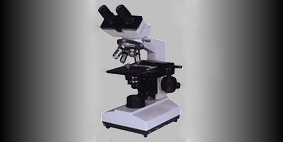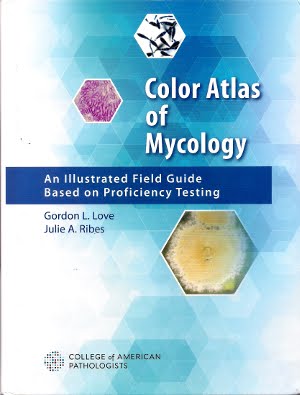Sunday, 10 June 2012
Paecilomyces lilacinus
Paecilomyces lilacinus (Fungus)
Ecology: Wide-spread cosmopolitan saprobe of soil and
decaying plant material. Paecilomyces
species have been implicated in the spoilage of food. Has been isolated from cosmetics and some
species of Paecilomyces parasitize insects.
Grows well at 30oC but growth is restricted at 37oC
Macroscopic
Morphology: As with many fungi, colour is influenced by the media it grows on. Colonies often display a
faint violet or mauve colouration (hence the name derived from lilac) which may
develop to a reddish-grey tint. The
reverse is unremarkable. Colonies are
woolly to floccose and growth is moderately rapid, reaching 3 – 4 cm in about a
week.
Paecilomyces lilacinus on SAB ~2 weeks at 30oC - Note slight lilac (purplish) colour.
Microscopic
Morphology: P.lilacinus produces hyaline (clear), septate hyphae. Conidiophores stipes (3 -4 µm
wide) usually arise from submerged hyphae and can achieve lengths between 400 µm
– 600 µm. Branched conidiophores give rise to clusters
of phialides. The phialides have a broader
base which tapers to form a long, narrow neck giving a delicate elegant appearance
if compared to Penicillium. The phialides tend to curve away from the
central axis of the conidiophore.
Conidia (2.5 – 3.0 µm by 2.0 – 2.2 µm) form at the apical end of the
phialides and are ellipsoidal (spindle) to fusiform in shape. They arise in rather long divergent chains
which are easily disrupted.
P.lilacinus LPCB (X400 -Nikon)
Ditto
More of the same in order to give a sense of how P.lilacinus appears. Delicate brush-like appearance with phailides turning away (outward) from stipe). Kind of resembles Neptune's trident! Conidia in chains are copiously produced and easily disrupted. I found no advantage with either adhesive tape preparations or slide cultures in preserving the appearance. (LPCB X 400 Nikon)
P.lilacinus - another view of conidiophores and chains of conidia (LPCB X1000 I believe, DMD-108)
P.lilacinus - I hate books that offer one B&W photo or a simple line drawing as the sole example of a particular fungus. I find it difficult to get a real sense of the organism. So I tend to overdo it in these posts by offering a number of views. (LPCB X1000 Nikon)
P.lilacinus - showing a long chain of conidia which are delicate & easily disrupted
(X1000+10 DMD-108)
P.lilacinus - showd delicate, elongated, flask-shaped phailides bending away (splaying out) from stipe. (LPCB X100, DMD-108)
P.lilacinus - final view of phailides and chaining conidia.
Size difference from previous photos is due to cropping.
(LPCB X1000 Nikon)
Pathology: Often considered an environmental contaminant
however should not be immediately dismissed as such. P.lilicinus has been isolated from ocular
infections such as keratitis, endopthalmitis and corneal ulcers. Also has been implicated in bursitis,
sinusitis, endocarditis, pulmonary infections, cutaneous infections, catheter
related infections and even onychomycosis (nail infections). Diabetic patients and immunocompromised
patients may be at greater risk of infection.
P.lilacinus been successfully
treated with ketoconazole.
* * *










.jpg)























